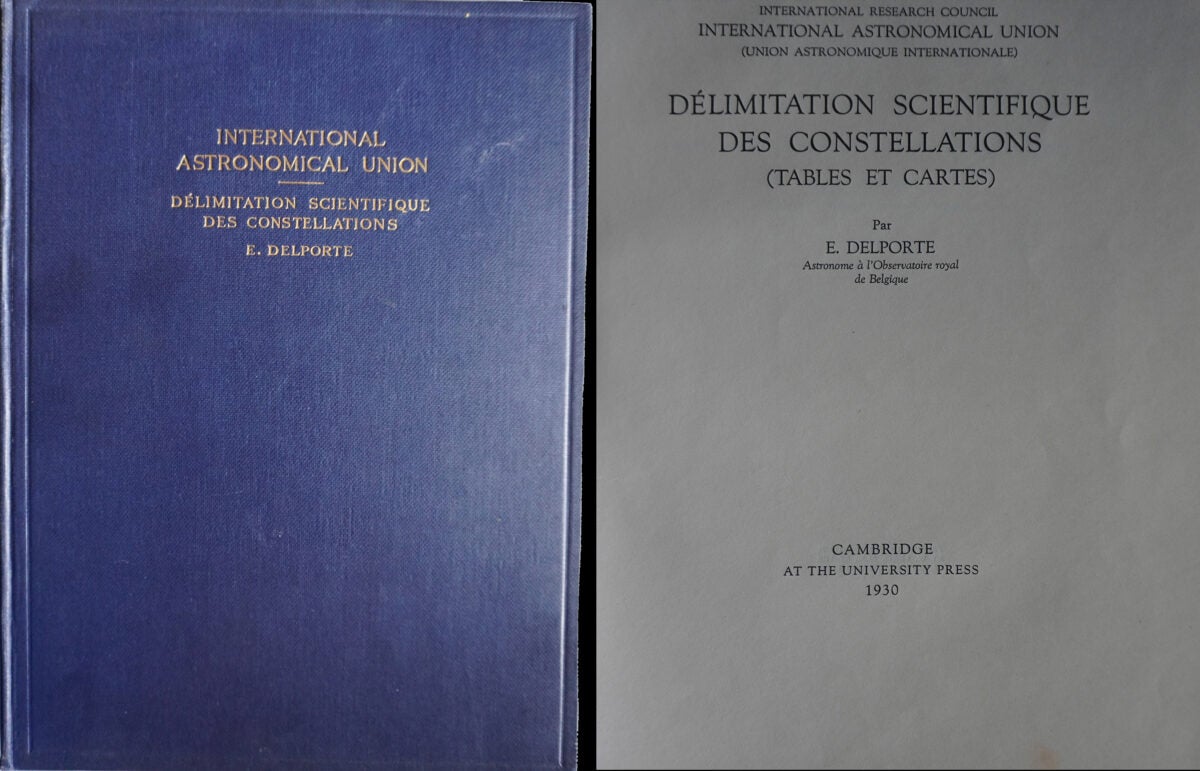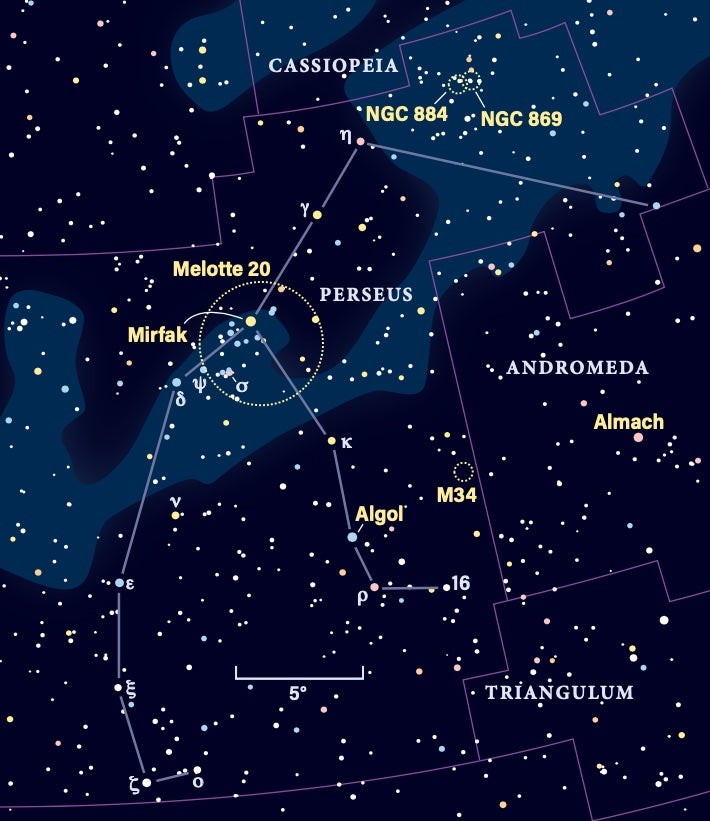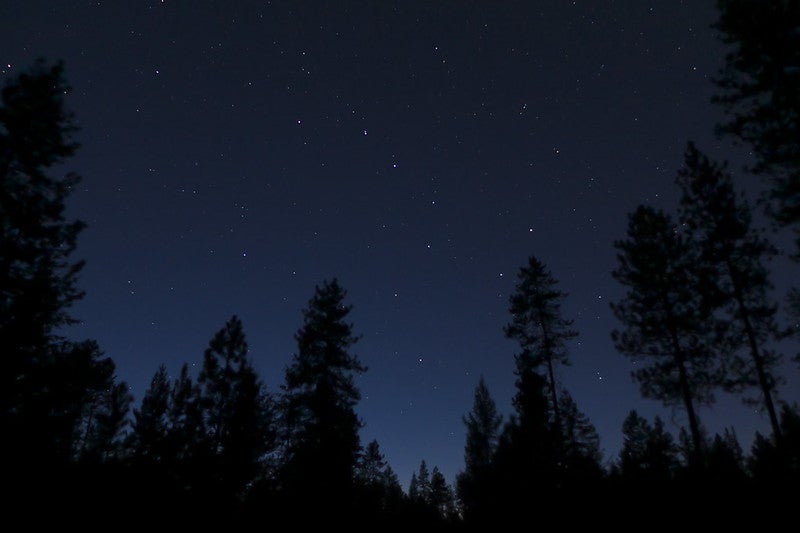
The term “constellation” evokes several denotations. The most familiar is “a grouping of naked-eye stars sometimes connected by imaginary lines or superimposed by illustrations to suggest images, either earthly or mythological.” Strictly speaking, however, a constellation is a distinct portion of our sky with precise borders, not simply a collection of stars near each other as we see them.
The road to an official consensus on the topic was lengthy, and not until the early 20th century did an accord arrive. An agreement, initiated in 1922, refined in 1925, finalized in 1928, and published in 1930 by the International Astronomical Union (IAU) — the principal worldwide organization of its type — formally resolved the issue, basing its solution primarily through the endeavors of the Belgian astronomer Eugène Joseph Delporte, who mapped 88 constellations meticulously demarcated with respect to established coordinates in the sky.
Mapping the sky

Every astronomical object, regardless of its nature, now unequivocally belongs to a specific constellation. While the Moon and planets, which move steadily against the background of seemingly immobile stars, change celestial address quite often, we nevertheless reference their locations within the constellations where they reside at any given moment.
We identify the dome of the sky as half of the celestial sphere, onto which the inhabitants of the heavens are pasted, with the constellations themselves being infinitely deep. The lines and points projected onto it create a most convenient framework for us earthlings. For the foreseeable future, no space travel will take us far enough to warrant modification of this ever-so-useful construct. Throughout history and well into the next several thousand years, the time-honored countenances and assemblages were and will be there for us.
Related: Do constellations look the same from the other planets in the solar system?
But as on Earth, nothing in the sky is permanent. Our view of is merely a temporary snapshot. Constant — albeit slow — stellar shifting on scales of multiple thousands of years guarantees that the seemingly everlasting shapes so much a part of our heritage will eventually disperse. Lacking revisions, though, the constellation boundaries per se, with their exact sizes and contours, will not change regardless of the movements of their residents and the resultant crossings into adjacent terrain.
Creating constellations
Many early civilizations scrutinized the starry abode, forwarding various explanations for the portrayals placed high above by powers unknown. Creating enduring formations allowed nascent cultures to memorialize them with myths and legends, many still known in the present day. Emphasizing regions of dense stellar concentration while frequently overlooking sparsely occupied corridors, they incorporated animals and creatures, heroes and villains, and gods and goddesses relevant to fact and fable of the day.
Akin to perceiving images in clouds, we sometimes need an active imagination to see what our ancestors saw. But some celestial figures, such as Orion, a daunting hunter riding conspicuously in the sky and visible from both hemispheres between November and March, seem more credible than others. Because the range of interpretations is immense, widespread societies have viewed the groupings differently, resulting in centuries of inconsistencies for cosmic nomenclature.
While the sky remains (relatively) static, epics relating to the stars have evolved as their associated populaces have done the same. Heralding what we know and recognize today, the Babylonians instituted a partial basis for constellations visible from middle and northern latitudes, which the Greeks of the 4th century b.c.e. adopted and broadened. Forty-seven representations from this era still stand.
The narrative begins with the rise of asterisms, arrays of stars we might loosely consider “proto-constellations.” Many — but certainly not all — having been firmly implanted in sky lore since time immemorial. Although not endorsed by professional astronomers, asterisms abound and we can understand how some have morphed into now well-defined constellations.
Asterisms can be large or small, sparse or dense, bright or dim, and can span more than one constellation. No rules govern their creation: Anybody can invent one, and no complete roster exists. Probably the most familiar is the Big Dipper, seven bright stars within the northern constellation Ursa Major the Great Bear. This figure is deeply immersed in our collective psyche and often (though erroneously) thought to be a constellation on its own merit.

Related: Asterisms: Hunt the night sky’s faux constellations
Within asterisms —and indeed constellations, or any areas of the sky in general — stars have no tangible connections; they just happen to lie along the same line of sight. Conspicuous stars in the same direction from us normally do not fraternize.
The depictions of sky segments cultivated from ancient Babylon and Greece survived the Middle Ages, and soon after empty spaces here and there were filled in. The German astronomer Johann Bayer added 11 constellations in his 1603 star atlas, Uranometria, based on Southern Hemisphere observations of explorers Pieter Dirksz Keyser and Frederick de Houtman. Johannes Hevelius, a Polish astronomer, added 10 more, seven of which have remained with us. The French astronomer Nicolas Louis LaCaille generated 17 south of the equator, several bearing the names of scientific instruments.
By the latter half of the 19th century, star charts and atlases featured loosely fabricated patchworks of constellations with arbitrary boundaries of varying shapes and sizes. Many included elaborate drawings of figures overlaying the stars, and different sources gave different delineations. The growing complexity of astronomy, however, demanded more accuracy, necessitating the refinement of such vague impressions of our sky.
Related: Why aren’t the constellations always drawn the same way?
Uniformity didn’t occur until the 1930 agreement that gave us the 88 constellations we acknowledge today.
Still changing
At this juncture, things would be simple if not for complications to the geometry of the sky arising from Earth’s axial tilt of 23½° to the plane of its orbit. One effect of this tilt is that the Sun’s apparent path in the sky as we see it, called the ecliptic, deviates over the course of a year, reaching 23½° north of the celestial equator at the beginning of the Northern Hemisphere summer and 23½° south of it at the beginning of the Northern Hemisphere winter.
Added to this is precession, the wobbling of Earth’s axis with respect to the fixed astral grid — akin to the way a slowing top starts to wobble and falter — in a 25,772-year cycle. As a result, Earth’s poles, although always seeming to point in the same directions, shift infinitesimally from year to year against the starry background. In lockstep the entire celestial grid follows this slight deviation and the lines of right ascension, declination, and the constellations angle away en masse slightly from being parallel and perpendicular to one another.
Delporte drew the lines of the 88 constellations parallel and perpendicular to the celestial sphere’s positioning for the year 1875, which we now refer to as Epoch 1875. By 1930, the bearings between right ascension and declination and the constellation lines had repositioned themselves to reflect 55 years of precession. Now in 2024, there have been 149 intervening years of precession, and today’s sky atlases show the lines skewed a bit to each other, most notably near the poles.
As much as possible, Delporte strived to keep stars within the constellations they were historically assigned to, but some — such as 10 Ursae Majoris, which now resides in Lynx — slipped through. However, Delporte’s rigorous analysis, coupled with unhurried stellar movement against the distant background, has resulted in only one of Bayer’s 1,200 stars crossing into another constellation since 1603. In 1992, Rho (ρ) Aquilae moved from Aquila the Eagle to Delphinus the Dolphin. While numerous faint stars traverse constellation lines every year, that a mere single example from Bayer’s 400-year-old inventory has transitioned is a testament to the long, drawn-out timescales on which our cosmos changes — and to the mere eyeblink in which humanity has attempted to understand and map it.
So ingrained is celestial taxonomy that longstanding labels will most likely persist, comparable to those still used in cities now built around roads and landmarks from eras long departed. Inevitably, when waves of stars moving into and through neighboring constellations pass a tipping point several millennia into the future, terminology and identifiers far from what we are presently so accustomed to will rule the day.
By that time all vestiges of the 1930 agreement will have been supplanted, but for now we have a rock-solid foundation upon which to base our maps, plots, and records of the sky.









